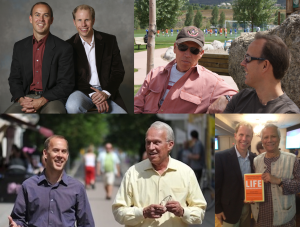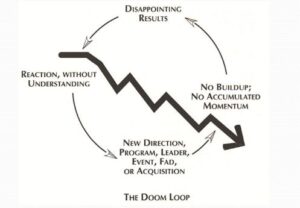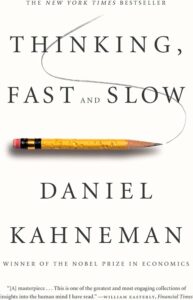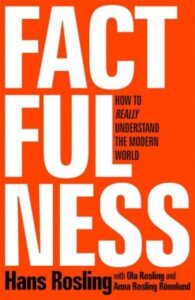Complacency is one of the most dangerous and devious traps we can fall into. It lulls us into a false sense of comfort, blinding us to the risks we should be addressing and the growth we could be pursuing. Whether it’s our health, relationships, career, or leadership, complacency keeps us stuck instead of moving forward.
Examples abound. For instance, a worker might stay in a role she’s outgrown, missing out on more challenging and fulfilling opportunities. A manager may ignore early signs of conflict among team members, allowing tensions to escalate. A husband might stop expressing appreciation for his wife. Sure enough, she starts to feel unseen and undervalued.
The Signs of Complacency
When you’re complacent, you start to take things for granted and slip into routines that make life feel monotonous. You stick with what you know and slowly stop pushing yourself.
Are you taking the easy way?
Resisting change?
Avoiding risk?
Do you feel your drive dulling and your spark dimming?
The Problem with Complacency
Over time, this will deflate your ambition and lead to drifting and settling in life. Comfort and satisfaction aren’t bad. They’re actually essential parts of a fulfilling life. But if you have too much of them, you may stop growing and dreaming. And you may no longer be in pursuit of what truly matters. Complacency can be a silent threat to your well-being, growth, and performance.
Here are 8 downsides of complacency, along with the deeper problems they cause:
1. Complacency can sap your motivation. When you become too comfortable, you stop feeling the urgency or desire to strive for more. Without motivation, you stop reaching for your potential and stagnate.
2. Complacency can lead to inaction when action is warranted. It lulls you into believing everything is fine, even when you need a change. As a result, you miss critical moments when decisive steps could make a difference.
3. Complacency can prevent you from making needed improvements. You may ignore areas where growth or progress is possible because you feel things are “good enough.” This mindset keeps you from evolving and advancing.
4. Complacency can dilute your initiative. You start to settle and no longer believe that better outcomes are possible or worth pursuing. Over time, it drains the life out of you as you lose more and more hope.
5. Complacency can lead to mediocre or poor performance. By not challenging yourself, you operate below your capabilities. You begin to accept average as your standard. In the process, you start losing your credibility and the respect of others (and yourself).
6. Complacency can lead to missed opportunities. You fail to prepare and position yourself for what’s ahead. You miss your window of opportunity. Exciting rewards elude you.
7. Complacency can derail your career. In fast-moving environments, staying still equates to falling behind. Without adaptation, you lose your edge and risk becoming irrelevant or overlooked. You become a casualty of change and disruption.
8. Complacency can lead to living by default, to not really choosing the life you’re living. Are you letting life happen to you instead of shaping it? This can lead to a sense of dissatisfaction and regret. To a life far from the one you really want.
Conclusion
The complacency trap can quietly steal some of your most valuable assets—the drive to grow and achieve and the deep fulfillment that comes from putting yourself on the line and attempting hard things. It’s a subtle danger because it’s natural to seek peace and comfort.
But between passive ease and frantic striving lies something powerful—a place of purposeful living, meaningful action, and arousing adventure. That’s where you can thrive—pursuing what matters and making a difference while cherishing the time you’ve been given.
Wishing you well with it—and let me know if I can help.
–Gregg Vanourek

Reflection Questions
- What are you complacent about?
- How is it undermining you?
- What will you do about it, starting today?
Tools for You
- Traps Test (Common Traps of Living) to help you identify what’s getting in the way of your happiness and quality of life
- Quality of Life Assessment so you can discover your strongest areas and the areas that need work, then act accordingly.
- Leadership Derailers Assessment to help you identify what’s inhibiting your leadership effectiveness
Related Articles
- “The Complacency Trap”
- “This Is How to Avoid Complacency”
- “Are You Drifting through Life”
- “Tired of Settling? How to Light Your Life and Work on Fire”
- “What Are You Avoiding?”
- “How Inertia Keeps Us from Making Needed Changes”
- “What Keeps Us from Moving On?”
- “The Trap of Deferring Dreams and Postponing Happiness”
Postscript: Inspirations on Complacency
- “Never be passive about your life… ever, ever.” -Robert Egger, social entrepreneur and activist
- “The life you have left is a gift. Cherish it. Enjoy it now, to the fullest. Do what matters, now.” -Leo Babauta, founder, Zen Habits
- “Complacency keeps you living a comfortable life… not the life you desire. Challenge yourself to do something different. Then, notice the new charged quality of your life.” -Nina Amir, writer
- “Just floating along from one year to the next, accepting things as they present themselves without question or intention, is a surefire recipe for dissatisfaction and despair in later life. Living the default life is… living a life that isn’t really of our own choosing. It’s living a life that inevitably gives rise to questions like ‘Where did all the time go?’ ‘How did my life pass so quickly?’ and ‘Why did I squander my one precious opportunity for living?’” -Richard Leider and David Shapiro, Who Do You Want to Be When You Grow Old? The Path of Purposeful Aging
- “The tragedy of life is often not in our failure, but rather in our complacency; not in our doing too much, but rather in our doing too little; not in our living above our ability, but rather in our living below our capacities.” -Benjamin E. Mays, activist and rights leader
- “There is no passion to be found playing small—in settling for a life that is less than the one you are capable of living.” -Nelson Mandela, South African anti-apartheid activist and politician
- “Complacency is a blight that saps energy, dulls attitudes, and causes a drain in the brain. The first symptom is satisfaction with things as they are. The second is rejection of things it as they might be. ’Good enough’ becomes days today’s watchword and tomorrow’s standard.” -Alex and Brett Harris
- “So many people live within unhappy circumstances and yet will not take the initiative to change their situation because they are conditioned to a life of security, conformity, and conservatism, all of which may appear to give one peace of mind, but in reality nothing is more dangerous to the adventurous spirit within a man than a secure future. The very basic core of a man’s living spirit is his passion for adventure. The joy of life comes from our encounters with new experiences, and hence there is no greater joy than to have an endlessly changing horizon, for each day to have a new and different sun.” -Jon Krakauer, Into the Wild
+++++++++++++++++
Gregg Vanourek is a writer, teacher, and TEDx speaker on personal development and leadership. He is co-author of three books, including LIFE Entrepreneurs: Ordinary People Creating Extraordinary Lives (a manifesto for living with purpose and passion) and Triple Crown Leadership: Building Excellent, Ethical, and Enduring Organizations (a winner of the International Book Awards). Check out his Best Articles or get his monthly newsletter. If you found value in this article, please forward it to a friend. Every little bit helps!





























